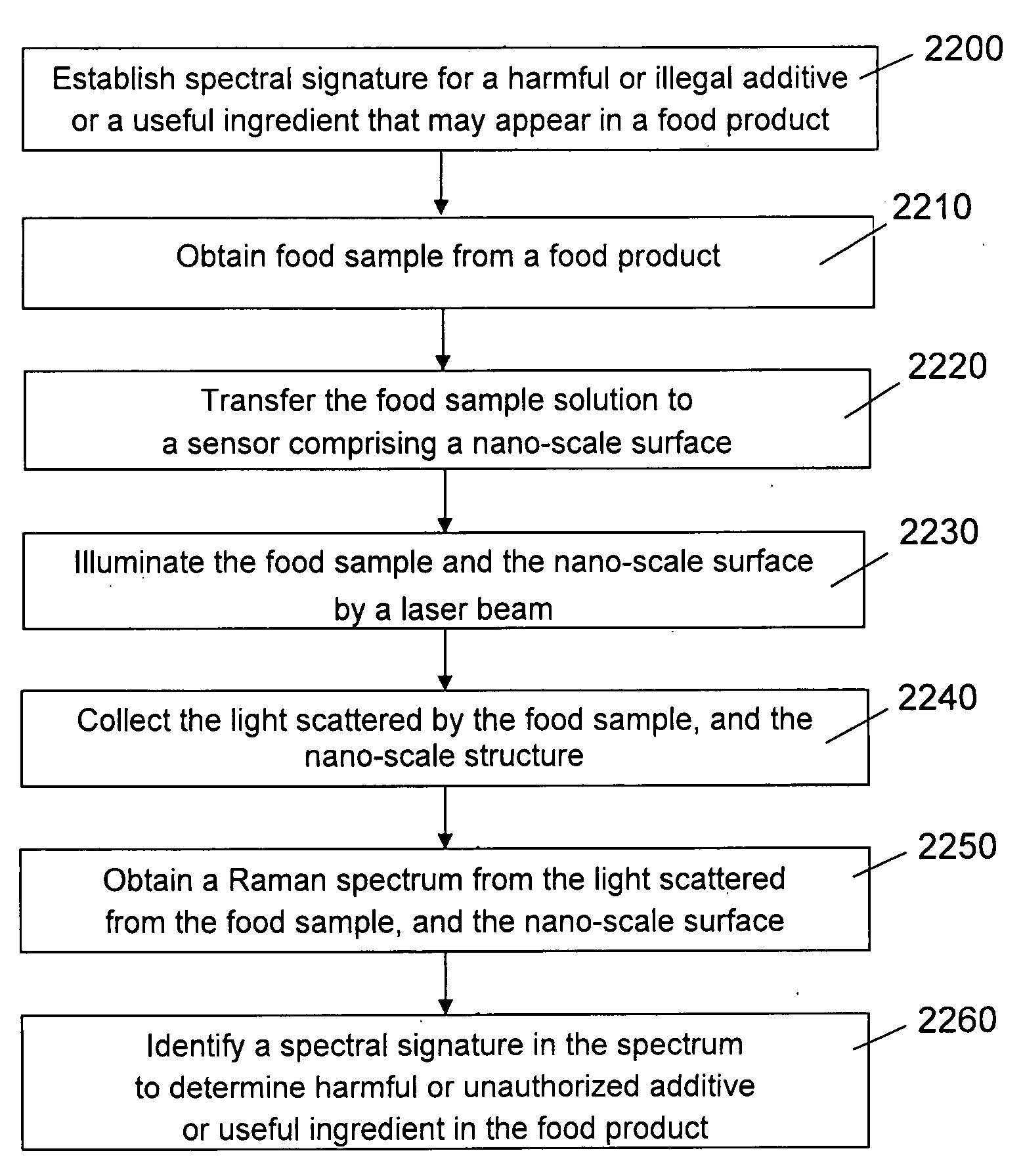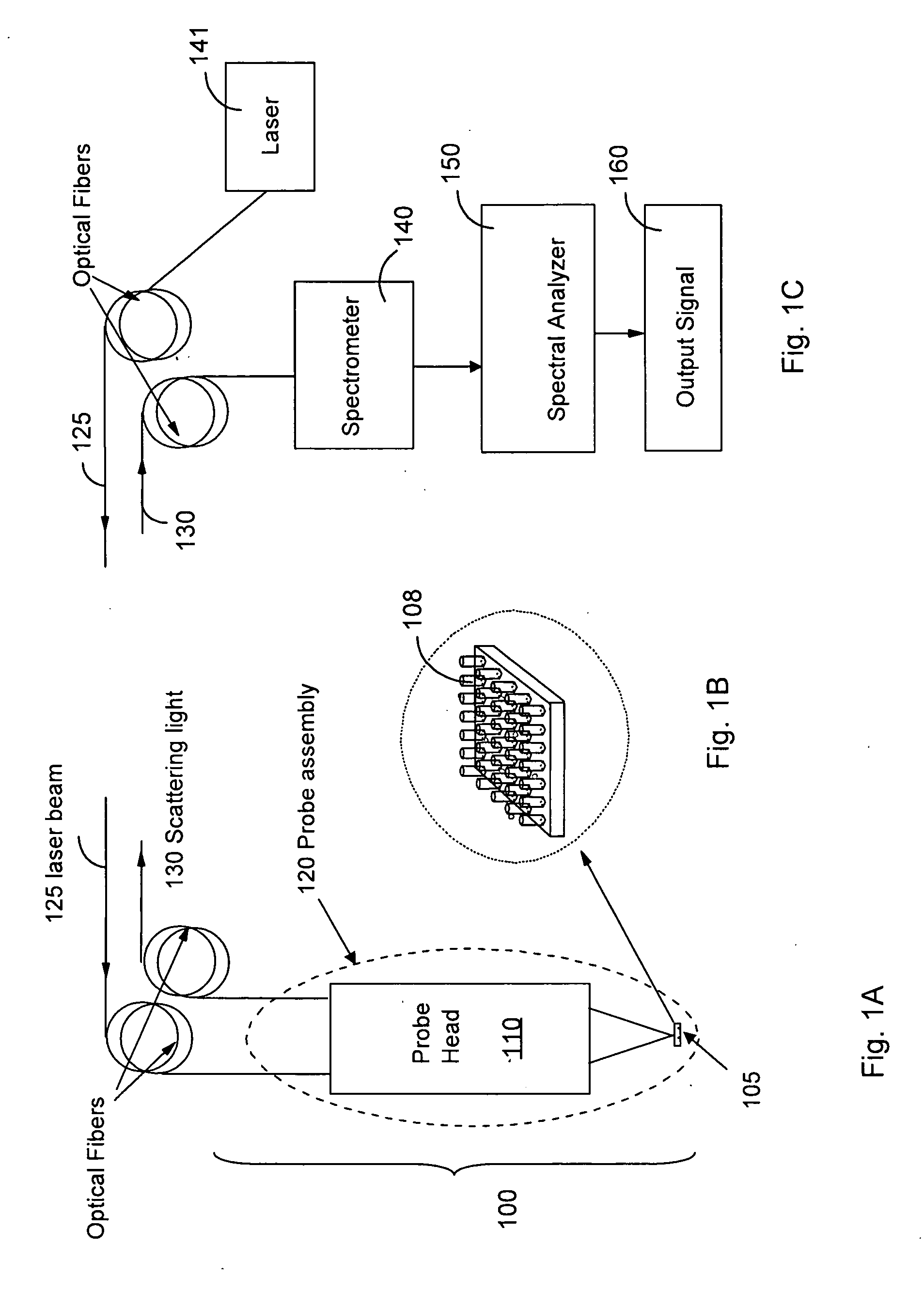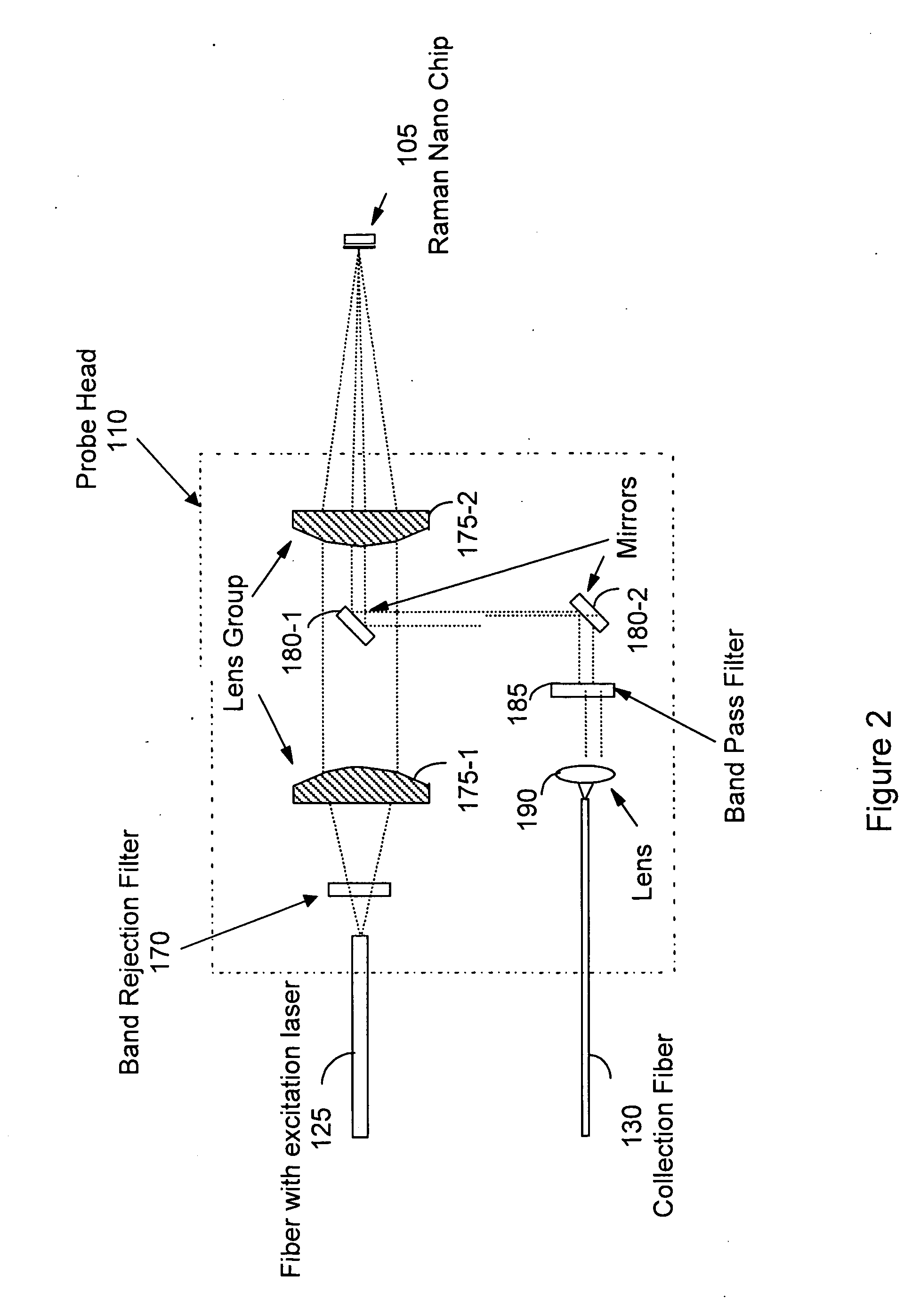Systems and methods for food safety detection
a technology of food safety and detection methods, applied in the field of improved light scattering probes and chemical sensors, can solve the problems of limited success, weak raman scattering signal of raman spectroscopy for trace chemical detection, and the limited application of conventional raman sensors, etc., to achieve short testing cycle, simple and non-invasive detection, and easy operation
- Summary
- Abstract
- Description
- Claims
- Application Information
AI Technical Summary
Benefits of technology
Problems solved by technology
Method used
Image
Examples
Embodiment Construction
[0048]Referring to FIG. 1A, a light scattering probe 100 includes a probe head 110 and a sensor 105. The sensor 105 includes a nano surface structure. The nano surface structure can include a plurality of nano rods 108, as shown in FIG. 1B, a plurality of nano holes, or other surface structures having dimensions at nanometer scale. In some embodiments, as described below, nano surface structures can be prepared by coating the surface of the sensor 105 of a solution containing a colloidal suspension of nano particles. The solution can be subsequently evaporated to deposit the nano particles on the surface.
[0049]Using the example of nano surface comprising nano rods 108, a sample fluid can be introduced to the nano rods 108 in the sensor 105. The sample fluid can include a body fluid obtained from a patient or an illicit drug user for disease diagnosis and drug use determination. Examples of the body fluid can include blood, saliva, urine, serum, tear, sweat, and stomach fluid. The sa...
PUM
 Login to View More
Login to View More Abstract
Description
Claims
Application Information
 Login to View More
Login to View More - R&D
- Intellectual Property
- Life Sciences
- Materials
- Tech Scout
- Unparalleled Data Quality
- Higher Quality Content
- 60% Fewer Hallucinations
Browse by: Latest US Patents, China's latest patents, Technical Efficacy Thesaurus, Application Domain, Technology Topic, Popular Technical Reports.
© 2025 PatSnap. All rights reserved.Legal|Privacy policy|Modern Slavery Act Transparency Statement|Sitemap|About US| Contact US: help@patsnap.com



